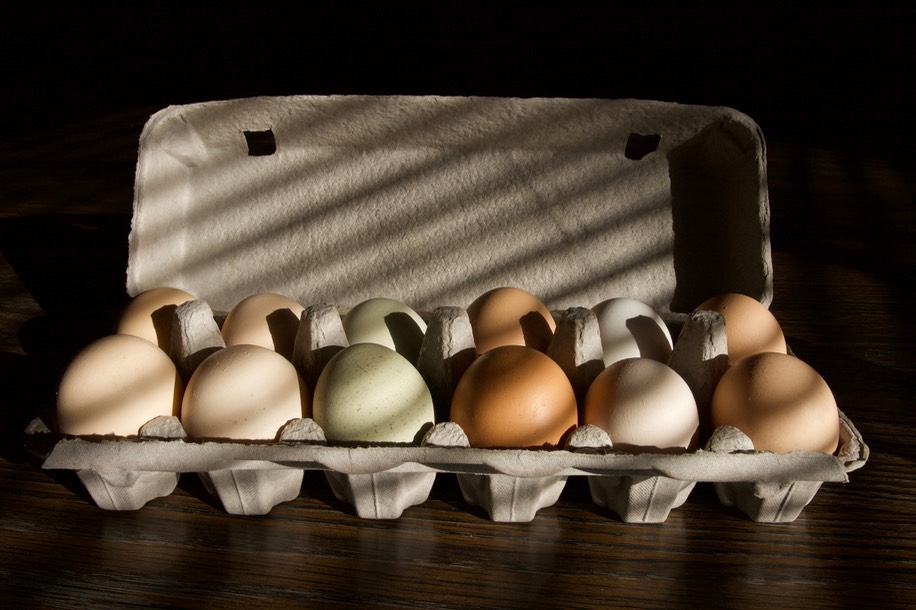
Just a few factoids:
- When cooking an over-easy egg (an egg in which the white is cooked but the yolk is still “runny”) place some water in the saucepan you are cooking with, after the white has started to firm up on the bottom and cover the sauce pan. The resulting steam will cook the top of the white and the yolk - no need to flip the egg and risk breaking the yolk.
- When cooking a hard-boiled egg a bit of green may form around the yolk. This may happen if the egg is cooked to long or if there is too much iron in the water. Placing the hard-boiled egg in cold water until it has chilled will help prevent the green cast from forming -- the green does not affect taste.
- USDA grading standards are used to measure the appearance of eggs - usually how they appear when fried or poached - not their taste or nutritional value. On a budget and like scrambled eggs? Buy the lowest grade of egg possible.
- Egg shell color is another cosmetic issue - white eggs tend to be the norm in supermarkets in the United States but are not superior in any form to other colored eggs (ask the Easter Bunny!).
- Eggs often take on tastes based on what the chicken eats or drinks. We buy eggs from friends and neighbors - the eggs (pictured above) are often of a variety of colors and usually taste a bit salty because of the salts in our drinking water. We never have to salt our eggs.
- Eggs from pasture fed free range chickens typically have less cholesterol, when compared with eggs from cage reared chickens, and higher levels of vitamins and Omega 3 fatty acids.
- Hard boiled eggs make great additions to curries and meat dishes like pulled pork. In addition to their nutritional value, they add a different texture to the eating experience and a different form to the visual display of the meal.
Chicken eggs are high in protein (12-13% by weight).
Some people have significant egg allergies.
Care should be exercised when cooking with eggs because of the possibility that the shells have become contaminated with Salmonella bacteria. Caution, not fear, is what is called for.
Eggs produced for mass consumption are generally harvested from chickens which are severely mistreated and fed significant amounts of antibiotics.
Eggs produced by chickens which are allowed to range freely - free range chickens - (as opposed to those which are confined in cages which prevent any significant movement) are becoming more widely available. Free range chickens are generally, but not always, fed with naturally produced feed and are usually not fed antibiotics. As with the production of feed-lot beef, antibiotics are given to chickens (and cattle) because they are more susceptible to infection and disease when confined in close proximity to each other. Eating eggs from chickens which are not fed antibiotics should be a priority for all egg eaters because the use of antibiotics in factory egg, beef, and pork production is a major contributor to the rise of antibiotic-resistant bacteria -- the most significant health risk of our century. There is no legal standard for “free range chickens”.
The egg yolk contains all of the Vitamin A, D, and E found in eggs. Very few foods contain Vitamin D.
There are continuing, and conflicting, assessments about the health issues associated with cholesterol in eggs.